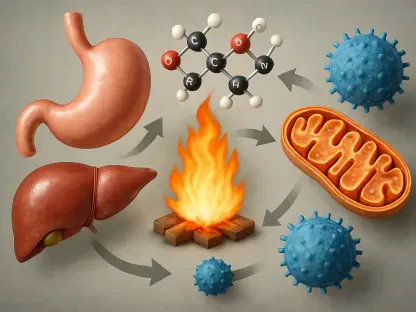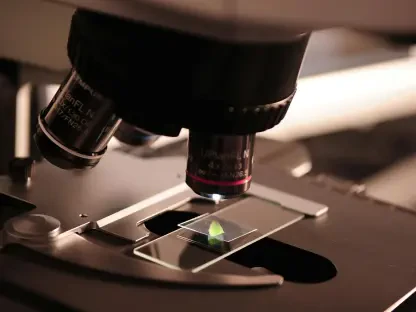In a groundbreaking move that underscores the pharmaceutical industry’s shift toward domestic production, Johnson & Johnson has committed a staggering $2 billion to a ten-year partnership with Fujifilm Biotechnologies at a new manufacturing hub in Holly Springs, North Carolina. This investment is not just a financial milestone but a strategic alignment with the growing emphasis on reducing reliance on foreign drug imports, a priority amplified by political and economic pressures in the United States. As part of a larger $55 billion strategy to bolster local manufacturing capabilities, this deal positions the company as a leader in the push for pharmaceutical self-reliance. The Holly Springs facility, spanning 160,000 square feet, is set to play a pivotal role in this transformation, focusing on large-scale cell culture manufacturing. This development sparks curiosity about how such initiatives will reshape the industry’s supply chain dynamics and influence national healthcare security in the coming years.
Strengthening Domestic Production
The drive to enhance domestic drug manufacturing has gained significant momentum, with Johnson & Johnson’s latest investment serving as a prime example of corporate response to national priorities. The $2 billion partnership with Fujifilm Biotechnologies at the Holly Springs hub reflects a calculated effort to localize production and mitigate risks tied to international supply chains. This facility, expected to be fully operational in the near future, will focus on bulk drug substances, a critical component in pharmaceutical production. Such a move is particularly timely given the increasing scrutiny on foreign dependency for essential medicines. By prioritizing a robust US-based infrastructure, the company aims to ensure a steady supply of vital drugs while aligning with broader policy goals that advocate for onshoring. This initiative is a clear signal that major players in the industry are not merely reacting to external pressures but are proactively shaping a more resilient future for healthcare delivery.
Beyond the immediate impact on supply chain stability, this partnership highlights a deeper commitment to innovation within American borders. Johnson & Johnson’s decision to invest heavily in the Holly Springs hub is part of a comprehensive plan that includes multiple facilities across the country, reinforcing the United States as a central hub for pharmaceutical advancements. The company’s CEO, Joaquin Duato, has publicly emphasized the extensive network of manufacturing sites already operational in the US, surpassing any other nation in their portfolio. This strategic focus not only strengthens production capacity but also fosters job creation and technological development locally. As the Holly Springs facility gears up to handle large-scale operations, it becomes a cornerstone of a broader vision to integrate cutting-edge manufacturing techniques with national interests, ensuring that the benefits of innovation are retained domestically while addressing the evolving demands of the healthcare sector.
Industry-Wide Shift to Onshoring
The pharmaceutical sector is witnessing a collective pivot toward domestic manufacturing, with Johnson & Johnson’s $2 billion deal being just one piece of a larger puzzle. Other industry giants, such as Regeneron, have also secured significant agreements at the same Holly Springs hub, with a $3 billion, ten-year commitment underscoring the shared urgency to build US-based infrastructure. Similarly, companies like Roche, with a $50 billion investment plan, alongside Eli Lilly and AstraZeneca, are channeling substantial resources into expanding their American footprints. This trend is driven by a combination of potential tariffs, policy incentives, and the need to safeguard against global supply disruptions. The convergence of these efforts at facilities like Holly Springs suggests a collaborative yet competitive landscape where shared resources amplify individual corporate goals, ultimately benefiting the national healthcare ecosystem.
This industry-wide shift also reflects a strategic adaptation to geopolitical and economic uncertainties that have long plagued pharmaceutical supply chains. By investing in advanced manufacturing hubs within the United States, companies are not only securing their operations against international risks but also positioning themselves to lead in healthcare innovation. The Holly Springs hub, backed by Fujifilm’s own $3.2 billion investment, emerges as a critical node in this network, hosting multiple major players under one roof. While specific details about the exact purposes of each facility remain under wraps, the emphasis on large-scale production capacity hints at a long-term vision for high-volume output. Such developments are poised to redefine how drugs are produced and distributed, ensuring that critical medications remain accessible even amidst global challenges, while also aligning with legislative efforts to incentivize local production through acts like the “One Big Beautiful Bill Act.”
Future Implications and Strategic Growth
Reflecting on the strides made through this partnership, Johnson & Johnson’s commitment to a $2 billion investment at the Holly Springs hub marks a defining moment in the journey toward pharmaceutical independence in the United States. This initiative, alongside parallel efforts in locations like Wilson, North Carolina, where another $2 billion biologics site was announced, demonstrates a clear intent to fortify domestic capabilities. The collaboration with Fujifilm Biotechnologies not only enhances production infrastructure but also sets a precedent for how shared facilities can drive efficiency and innovation. Looking back, this move was a response to both market demands and national policy shifts, ensuring that the company plays a pivotal role in reducing foreign dependency while meeting the healthcare needs of the population.
As the industry continues to evolve, the next steps involve leveraging these investments to accelerate advancements in drug development and distribution. Stakeholders should focus on integrating state-of-the-art technologies at hubs like Holly Springs to maximize output and efficiency. Additionally, fostering partnerships between pharmaceutical leaders and policymakers could further streamline incentives for onshoring, ensuring sustained growth in domestic manufacturing. Exploring ways to expand workforce training programs will also be crucial to support these high-tech facilities, creating a skilled labor pool that can drive future innovations. Ultimately, the path forward lies in maintaining this momentum, balancing global outreach with a strong local foundation to secure a resilient and innovative pharmaceutical landscape for years to come.









